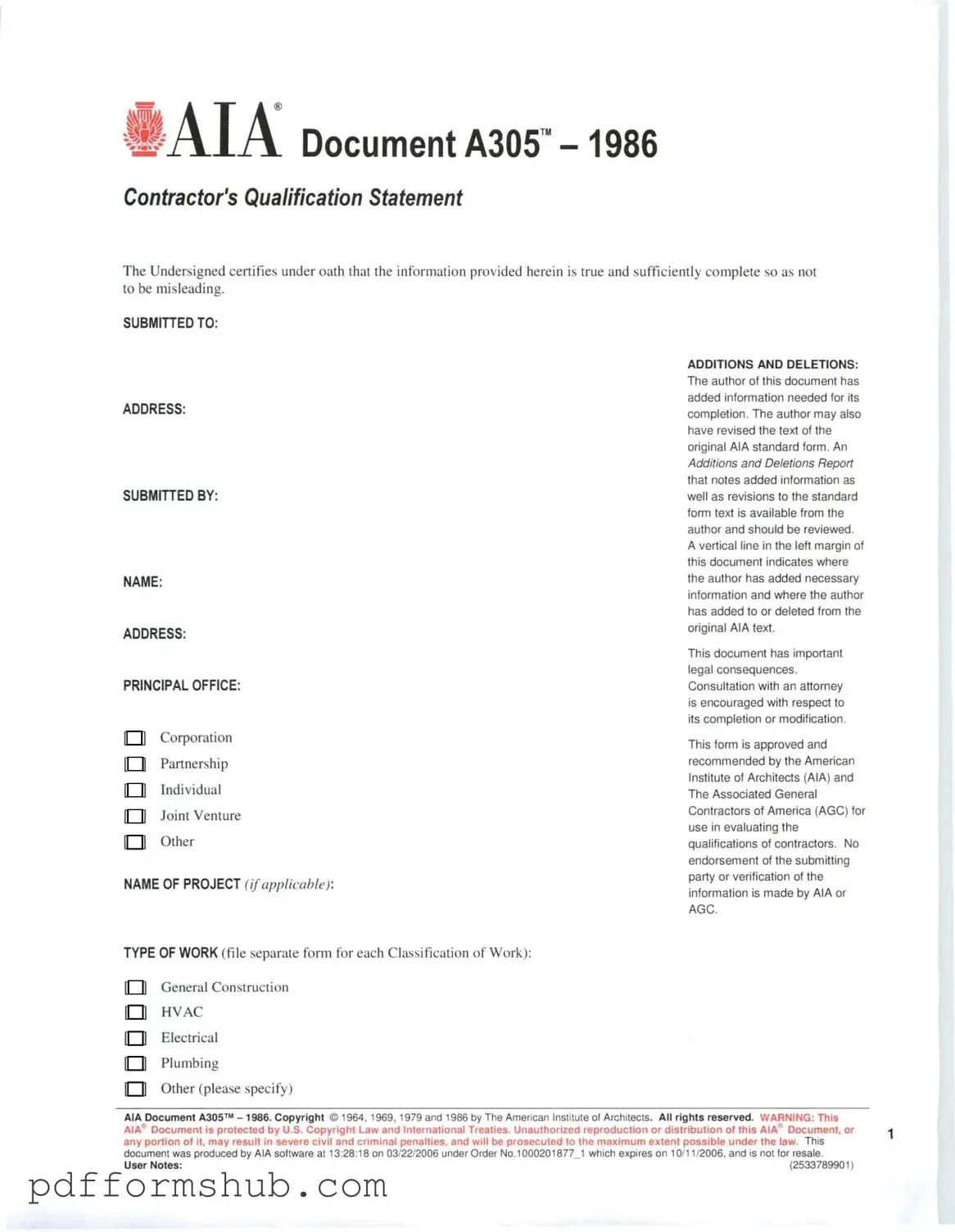Fill in Your AIA A305 Form
The AIA A305 form, also known as the Contractor's Qualification Statement, is a crucial document used by contractors to provide potential clients with essential information about their qualifications and experience. This form helps streamline the bidding process by presenting a standardized way for contractors to showcase their capabilities. Understanding its significance can enhance your chances of securing projects, so consider filling out the form by clicking the button below.
Customize Form
